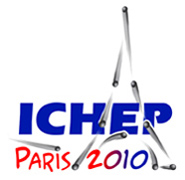Speaker
Simon George
(Royal Holloway)
Description
In 2010 ATLAS has seen the first proton-proton collisions at 7 TeV. Later this year a collision rate of nearly 10 MHz is expected. Events of potential interest for physics analysis are selected by a three-level trigger system, with a final recording rate of about 200 Hz. The first level (L1) is implemented in customized hardware, the two levels of the high level trigger (HLT) are software triggers.
The selection is described by the Trigger Configuration in the form of menus, each of which contains more than 500 signatures. Each signature corresponds to a chain of algorithms which reconstruct and refine specific event features. The HLT Steering receives information from the Configuration system, dynamically creates chains and controls the execution of algorithms and flow of information during event processing. The Steering tests each signature on L1-accepted events, and those satisfying one or more test are recorded for later analysis. To save execution time, the Steering has a facility to cache results, avoiding later recalculation. To control rate, prescale factors can be applied to L1 or HLT signatures. Where needed for later analysis, the Steering has a test-after-accept functionality to provide the results of the tests for prescaled signatures.
In order to maintain a high selection efficiency it is essential that the trigger can be dynamically re-configured in response to changes in the detector or machine conditions, such as the status of detector readout elements, instantaneous LHC luminosity and beam-spot position. This relies on techniques that allow configuration changes, such as L1 and HLT prescale updates, to be made during a run without disrupting data taking, while ensuring a consistent and reproducible configuration across the entire HLT farm.
We present the performance of the steering and configuration system during collisions and the expectations for the first phase of LHC exploitation.
Primary author
Dr
John Baines
(Particle Physics-Rutherford Appleton Laboratory-STFC - Science &)




